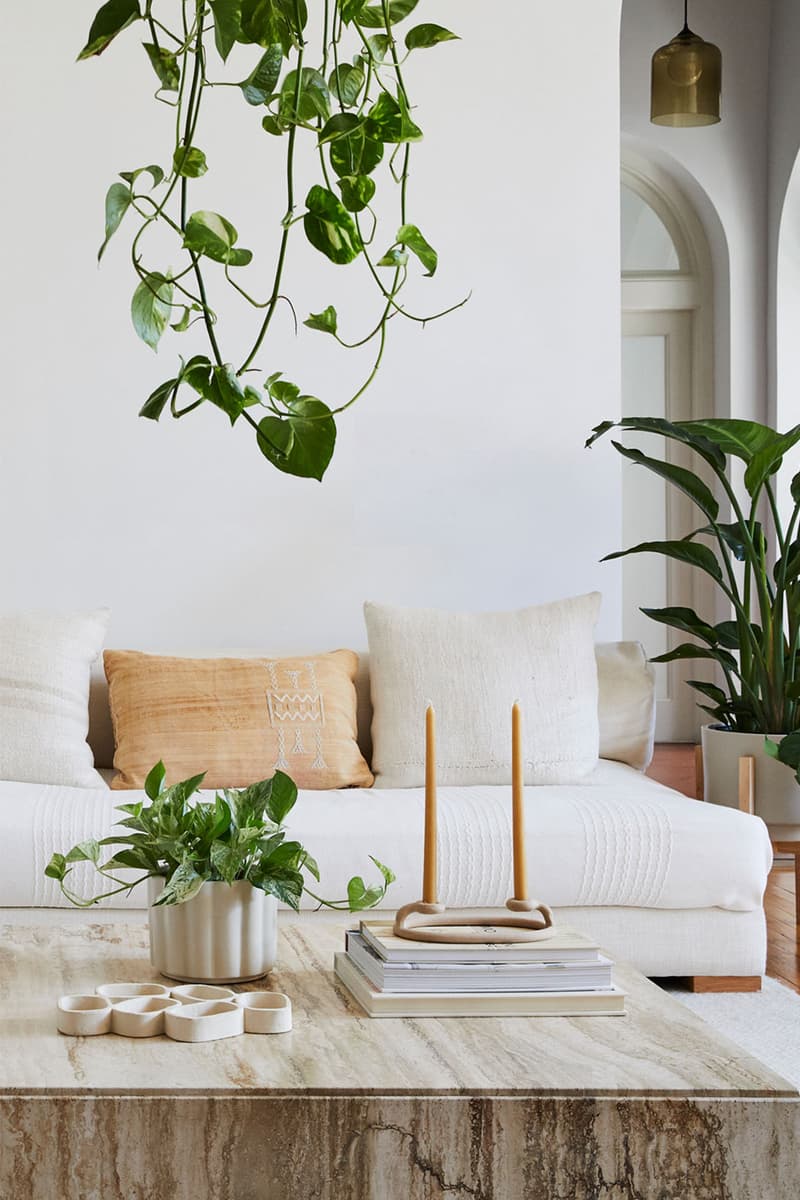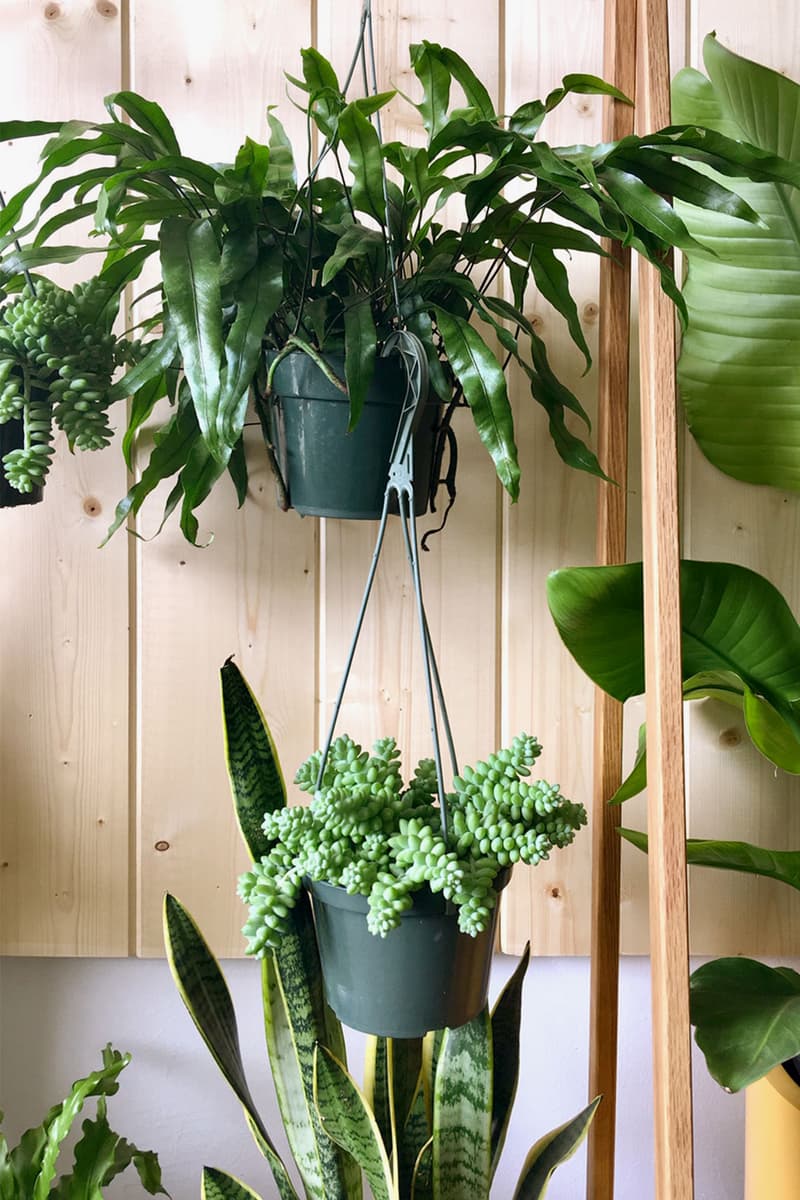

5 Best Indoor Hanging Plants for Cozying up Your Home, According To an Expert
Learn how and where to place them with bonus tips from The Sill’s brand director, Erin Marino.
From beginner-friendly houseplants to minimal pots, plants can be a simple yet aesthetic addition to your home or office space (plus, they’re great companions for those unable to own a pet). As we continue to spend most days indoors and see more greenery on our social media feeds, you may have noticed that many homey, cozy spaces aren’t complete without hanging plants. While the idea can be quite intimidating for beginners at first, hanging plants is actually simpler than you think. We caught up with The Sill‘s brand director Erin Marino for expert tips, along with some of the best choices that’ll complete a cozy space.
“Generally speaking, any plant can be hung as long as they’re in the right container,” Erin shares as she explains the main difference between a hanging and potted plant. While trailing plants are more commonly used, non-trailing plants can be hung as well. “It all depends on what look you’re going for, and where you plan to put the plant. Remember that light is food for plants, so the most important thing to consider is choosing the right plant for your space based on your light requirements first, and aesthetics second,” Erin comments. According to the expert, placing planters on shelves are a great alternative for those unable to drill holes directly into their ceilings or walls: “I love Jamie Song’s approach to placing a trailing Neon Pothos. He uses 3M clips to help the plant trail upward, which I think is a really fun and refreshing way to decorate with plants.”
Ahead of getting started on installing a plant, Erin recommends customers to consider the following points to make sure it’s being placed at the right spot:
1) Where you hang them. For example, will you need to pull out a ladder to be able to water them? That might be fine if it’s a succulent plant you’re watering once a month, but if it’s a leafy tropical that needs water at least once a week, it could become a bit of a hassle.
2) The weight of the potted plant. You’ll want to make sure your hanging planters are super secure as water and soaked potting mix add more weight.
3) How much you water your plant. It’s important to make sure your hanging plants that need to be watered frequently are easily accessible. You’ll also want to keep in mind just how much you’re watering when you do, and not only for weight’s sake. Most hanging planters do not have a drainage hole and saucer, as the excess water would spill onto the floor below. Because of that, you’ll want to be very mindful of how much water you give your plants as to not overwater them. Usually, about one third the volume of the planter is a good rule of thumb.
With these tips in mind, Erin shares five houseplants to hang indoors along with bonus care tips with HYPEBAE. Scroll down below to learn about some of the best beginner-friendly plants you can hang, or place on a shelf, for the ultimate homey space.
Heartleaf Philodendron
The Heartleaf Philodendron’s heart-shaped green leaves, easy-going nature and quick-growing trailing vines make it The Sill’s most popular houseplant. In the right indoor conditions, its trailing vines can grow over 10 feet long. It’s the perfect plant for a high shelf or hanging planter. The Philodendron also has a reputation for being one of the easiest houseplants to grow. It thrives in medium to bright indirect light but can tolerate low indirect light as well. Wilting vines, curling leaves and dry potting mix are signs your philodendron is thirsty. You’re looking at watering about once every one to two weeks, increasing the frequency with increased light.
Bird’s Nest Fern
If you’re looking for the perfect tropical houseplant, look no further than the Bird’s Nest Fern. Known for its wavy ripple-edge fronds that grow out of a central rosette, this plant will add a vibrant pop of green to any space. Added bonus: it’s considered non-toxic, making it safe to keep around your furry cat and dog friends. This fern thrives in medium to bright indirect light but can tolerate low indirect light. You’re looking at watering about once every one to two weeks, increasing the frequency with increased light. Native to tropical and semi-tropical environments, the Bird’s Nest Fern can benefit from a little extra humidity.
Phalaenopsis Orchid
Native to the tropics in India, China and Southeast Asia, the Phalaenopsis Orchid does best in a sunny, warm and humid environment. If you have a big, bright window, this is the plant for you. It thrives in bright indirect light but can tolerate medium indirect light. Try to keep out of harsh, direct sunlight. Your orchid will want to be watered about once a week when its potting medium is dry. When it’s in bloom, it can benefit from the occasional misting.
Anthurium
To add a pop of color to your space all year round, the anthurium is an excellent choice as it’s the world’s longest-blooming houseplant. It rarely has any downtime without a few flowers, because the anthurium’s flowers are actually modified waxy leaves rather than flowers. The more bright indirect light this plant is positioned in, the more beautiful bright “flowers” it will produce. Each bloom can last up to eight weeks. The anthurium’s non-modified green heart-shaped leaves are just as attractive, too. Keep the anthurium on your sill or another sunny spot in your home (it prefers bright indirect to medium indirect light), and water about every one to two weeks, depending on how much light it is receiving. Added bonus: gently snip off maturing “flowers” to enjoy them in a vase of water in another room.
Marble Queen Pothos
The pothos is an easy-going trailing plant which is probably why you see it everywhere, from homes to offices and every space in between. But there’s absolutely nothing wrong with being basic. In fact, this trailing plant will give your home lush, tropical vibes in no time. Added bonus: the pothos is incredibly easy to propagate in water. It prefers medium to bright indirect light but can tolerate low light. Water your pothos about every one to two weeks, depending on how much light it is receiving. More sunlight usually means water more frequently. Make sure to allow the potting mix to dry out completely between waterings.


























